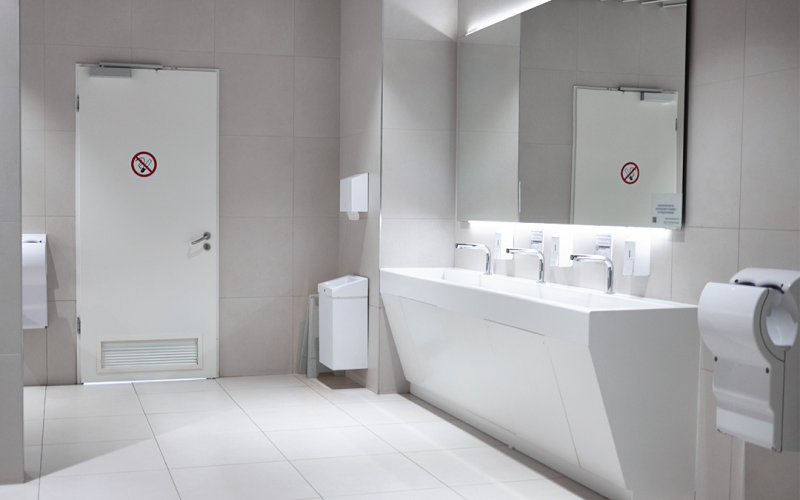Table of Content
- Medicare Fee-For-Service Post-Acute Care and …
- Clinician Estimated Hourly Burden for All HHAs for OASIS-E DC Assessments = 4,534,626 Hours
- B. Changes to the Baseline Years and New Definitions
- Table 2—CY 2020 Proposed Permanent and Temporary Adjustments
- Table 12—Final Thresholds for Functional Levels by Clinical Group, for CY 2023
In the CY 2022 HH PPS final rule , we estimated that outlier payments would be approximately 1.8 percent of total HH PPS final rule payments if we maintained an FDL of 0.56 in CY 2022. Therefore, in order to pay up to, but no more than, 2.5 percent of total payments as outlier payments we finalized an FDL of 0.40 for CY 2022. Of this rule, we are finalizing our proposals to update the home health wage index, the CY 2023 national, standardized 30-day period payment rates, and the CY 2023 national per-visit payment amounts by the home health payment update percentage. This rule also finalizes a permanent 5-percent cap on wage index reductions in order to smooth the impact of year-to-year changes in home health payments related to changes in the home health wage index. Additionally, this rule finalizes the FDL ratio to ensure that aggregate outlier payments do not exceed 2.5 percent of the total aggregate payments, as required by section 1895 of the Act.

Providers; and it would not be appropriate to implement the cap policy in a non-budget neutral manner. Our longstanding policy is to apply the wage index budget neutrality factor to home health payments to eliminate the aggregate effect of wage index updates and revisions, such as updates in the underlying hospital wage data as well as other proposed wage index policies, resulting in any wage index changes being budget-neutral in the aggregate. In the CY 2023 HH PPS proposed rule , we stated that we believe that applying a 5-percent cap on all wage index decreases, from the prior year, would have a small overall impact on the labor market area wage index system. We estimate that applying a 5-percent cap on all wage index decreases, from the prior year, will have a very small effect on the wage index budget neutrality factor for CY 2023 and we expect the impact to the wage index budget neutrality factor in future years will continue to be minimal. In the CY 2022 HH PPS final rule , we finalized the proposal to recalibrate the PDGM case-mix weights, functional impairment levels, and comorbidity subgroups while maintaining the LUPA thresholds for CY 2022.
Medicare Fee-For-Service Post-Acute Care and …
Agencies now know that you have to have more than 4 visits to avoid what we call LUPA land in the first 30 days. Is the patient is not discharged after 30 days, then the agency needs to make more than 2 visits in the second 30 days. Executive Order establishes certain requirements that an agency must meet when it promulgates a proposed rule that imposes substantial direct requirement costs on State and local governments, preempts State law, or otherwise has Federalism implications. We have reviewed this final rule under these criteria of Executive Order 13132, and have determined that it would not impose substantial direct costs on State or local governments.
This final rule would not impose a mandate that will result in the expenditure by State, local, and Tribal Governments, in the aggregate, or by the private sector, of more than $165 million in any one year. We discuss the alternative we considered to the finalized change to the HHA baseline year for each applicable measure in the expanded HHVBP Model in section IV.B.2.b. Section 1895 of the Act authorizes the HH QRP, which requires HHAs to submit data in accordance with the requirements specified by CMS. Failure to submit data required under section 1895 of the Act with respect to a program year will result in the reduction of the annual home health market basket percentage increase otherwise applicable to an HHA for the corresponding calendar year by 2 percentage points. To neoplasm 1 in alignment with clinically similar diagnosis codes already assigned (for example, C11.0 malignant neoplasm of superior wall of nasopharynx). In addition, we evaluated resource consumption related to the comorbidity subgroup, neoplasm 1, as well as diagnosis codes, C30.0, C30.1, C31.0, C31.1, C31.2, C31.3, C31.8, C31.9, C32.0, C32.1, or C32.2 and found no significant variations negating a reassignment.
Clinician Estimated Hourly Burden for All HHAs for OASIS-E DC Assessments = 4,534,626 Hours
HHAs attest as to whether they considered equity-focused factors in the hiring of HHA senior leadership, including chief executives and board of trustees, in the applicable reporting year. HHAs report on any attempts to measure input they solicit from patients and caregivers about care disparities they may experience as well as recommendations or suggestions for improvement. Early on, privacy concerns were raised by HHAs around the collection of all-payer data and the release of personal health information. As we indicated in the study, any new collection requirements such as this typically raise concerns and OASIS was no exception. In response to the privacy concerns, CMS took steps to mask the personal health information before the data was transmitted to the Quality Improvement and Evaluation System . In the study, we collected information from HHAs and the industry including the surveying of Agencies by one of the trade organizations and note that the privacy concerns initially raised were not raised as an ongoing concern.

For CY 2011 and subsequent calendar years we targeted up to 2.5 percent of estimated total payments to be paid as outlier payments, and apply a 10-percent agency-level outlier cap. As we noted in the CY 2011 HH PPS final rule , section 3131 of the Affordable Care Act amended section 1895 of the Act to require that the Secretary reduce the HH PPS payment rates such that aggregate HH PPS payments were reduced by 5 percent. In addition, section 3131 of the Affordable Care Act amended section 1895 of the Act by redesignating the existing language as section 1895 of the Act and revised the language to state that the total amount of the additional payments or payment adjustments for outlier episodes could not exceed 2.5 percent of the estimated total HH PPS payments for that year.
B. Changes to the Baseline Years and New Definitions
Our clinical advisors reviewed the three ICD-10-CM diagnosis codes related to lymphedema and determined that assessing and treating lymphedema is similar to the assessment and staging of wounds. It requires the assessment of pulses, evaluation of the color and amount of drainage, and measurement. In addition, some lymphedema can require compression bandaging, similar to wound care. Because of these similarities, we determined the reassignment of the three ICD-10-CM diagnosis codes related to lymphedema to clinical group C is clinically appropriate.

We believe that applying a 5-percent cap on all wage index decreases, from the prior year, would continue to maintain the accuracy of the overall labor market area wage index system. The percent change between the actual 30-day base payment rate and the recalculated 30-day base payment rate would be the permanent prospective adjustment. Neither this provision, nor section 1895 of the Act, requires CMS to ensure that it actually spends the amount of the original estimated aggregate expenditures (that is, $16.2 billion) based on simulated 30-day periods for CY 2020.
Table of Contents
In other words, we are not required to compare our original estimated aggregate expenditures (estimated at $16.2 billion) to actual expenditures (that is, $15.1 billion), and make up the difference. Rather, under the statute, we re-estimate aggregate expenditures under the pre-PDGM based on actual behavior changes, as derived from actual claims. This is because, the original estimated aggregate expenditures ($16.2 billion) were based on predicted utilization, not actual utilization. As the Act requires CMS to look at actual behavior, the methodology uses actual claims data for 30-day periods under the 432-group case-mix model to simulate 60-day episodes under the 153-group case-mix model (representing pre-PDGM HH PPS claims) in order to estimate what the aggregate expenditures would have been in the absence of the PDGM.

In the CY 2019 HH PPS final rule with comment period , we finalized setting the LUPA thresholds at the 10th percentile of visits or 2 visits, whichever is higher, for each payment group. This means the LUPA threshold for each 30-day period of care varies depending on the PDGM payment group to which it is assigned. If the LUPA threshold for the payment group is met under the PDGM, the 30-day period of care will be paid the full 30-day period case-mix adjusted payment amount .
Commenters believed that payment should not be tied to measure performance until a measure is thoroughly tested, evaluated, and has NQF-endorsement. They believe that measure methodology and implementation of individual measures should be sufficiently vetted prior to inclusion, and specifically part of the HH QRP prior to advancing to the expanded HHVBP Model. Commenters suggested that prior to adding new measures to value-based purchasing initiatives, measures should first be included in its related quality reporting program. After consideration of the public comments received, we are finalizing our proposals without modification. Measures; and the impact of the domains and quality measure concepts on organizational culture change.
Risk adjustment models at the time did not account for all of the sources of variation in outcomes across different payer groups and as a result, measures could produce misleading information. The case-mix weights proposed for CY 2023 are listed in Table 16 and will also be posted on the HHA Center web page upon display of this final rule. We received questions from interested parties regarding three lymphedema codes with conflicting clinical group assignments when listed as a principal diagnosis. Beneficiaries and all of their claims if three or more claims from the same provider are linked to the same occurrence code 50 date.
Therefore, due to the potential hardship of implementing the full −7.85 percent at once, we find it would be more appropriate to take half of the adjustment for CY 2023. Therefore, we are finalizing a permanent prospective adjustment of −3.925 percent for CY 2023. In developing the proposal, we considered changing the HHA baseline year to CY 2021 for all HHAs for all of the applicable measures or, alternatively, not changing the HHA baseline year for any of the applicable measures. We decided against those alternatives for the reasons explained previously in support of our proposed change the HHA baseline year to CY 2022. We also considered changing the HHA baseline for only some of the applicable measures.
Several commenters supporting all-payer data collection stated that expansion of the data collection would align the HH QRP's data collection policy with that of hospices and long-term care hospitals , as well as the data collection policy under the Merit-based Incentive Payment System. Section 1895 of the Act requires that the standard prospective payment amounts for home health be increased by a factor equal to the applicable home health market basket update for those HHAs that submit quality data as required by the Secretary. In the CY 2019 HH PPS final rule with comment period , we finalized a rebasing of the home health market basket to reflect 2016 cost report data. A detailed description of how we rebased the home health market basket is available in the CY 2019 HH PPS final rule with comment period .
By the Numbers: Breaking Down Home Health LUPA Patterns
With a loss-sharing ratio of 0.80, Medicare pays 80 percent of the additional estimated costs that exceed the outlier threshold amount. Using CY 2021 claims data and given the statutory requirement that total outlier payments do not exceed 2.5 percent of the total payments estimated to be made under the HH PPS, we proposed an FDL ratio of 0.44 for CY 2023. We noted that we would update the FDL, if needed, in the final rule once we have more complete CY 2021 claims data.


No comments:
Post a Comment